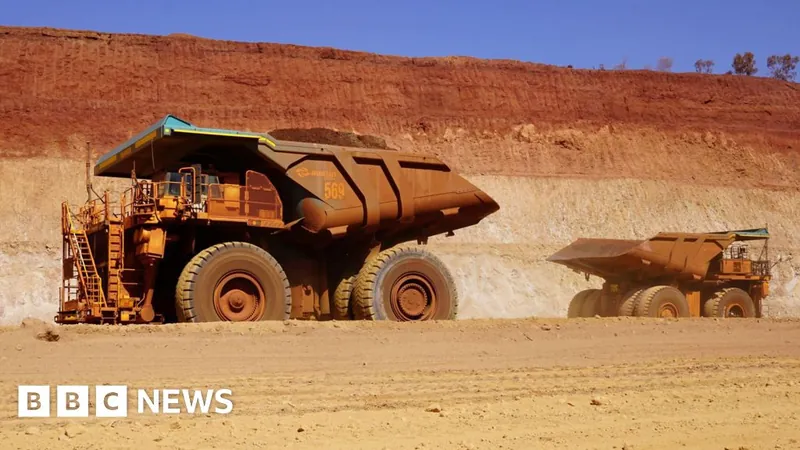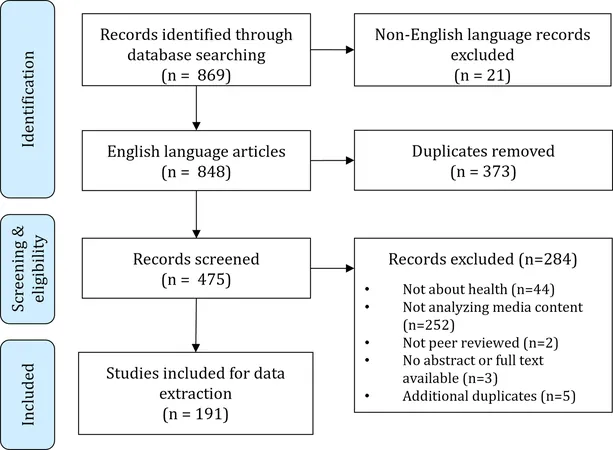
The Future of Mining: How Autonomous Trucks Are Revolutionizing Operations in Australia
2024-11-08
Author: Amelia
Introduction
In the heart of inland Western Australia lies Rio Tinto's Greater Nammuldi iron ore mine, a breathtaking yet remote location about a two-hour flight north of Perth, nestled within the vast Pilbara region. Here, in a landscape dominated by red-earth roads, an impressive fleet of 300-tonne driverless trucks operate flawlessly—a sight that merges innovation with an untouched wilderness.
At any given time, around 400 workers on rotation are flown into this isolated site to manage operations that never sleep. Yet, their primary focus may shift as they witness the hulking driverless machines transporting ore autonomously, an image both fascinating and slightly daunting for any observer. These autonomous trucks are not merely a novelty; they represent a significant leap into the future of mining technology.
Autonomous Technology in Mining
Rio Tinto currently oversees over 50 self-driving trucks running autonomously along designated routes within the mine. Each truck is equipped with cutting-edge technology, including lasers and radars that detect collision risks and obstacles, ensuring safety in an environment where human operators have traditionally played a critical role. An autonomous water cart, affectionately nicknamed 'Henry,' also plays a crucial role by spraying roads to mitigate dust, showcasing how automation touches every aspect of mine operations.
Operations and Coordination
The seamless coordination of autonomous vehicles is made possible through Rio Tinto's Operations Centre (OC) located about 1,500 km south in Perth. This nerve centre monitors approximately 360 self-driving trucks across all Pilbara sites, alongside a nearly wholly autonomous rail network used to transport the mined ore to shipping ports. The scale of this operation is staggering—84% of the mining fleet is autonomous, indicative of Australia's leadership position in this field.
Safety and Productivity
The mining industry is historically known for its dangers. According to Matthew Holcz, managing director of Rio Tinto’s Pilbara mines, the primary motivation behind automating operations is enhanced safety. Automation mitigates risks by removing human error—a crucial factor given the potential for fatigue and distraction in such high-stakes environments. The evidence speaks for itself: operational safety has markedly improved as a result of these technological advancements.
Furthermore, automation has bolstered productivity by an estimated 15%. Seamlessly running around the clock without the interruptions typically caused by shift changes or breaks, these autonomous trucks are also designed to travel faster when fewer human-operated vehicles are present, maximizing efficiency.
Challenges of Automation
However, such technological advancements come with a hefty price tag, with observers estimating Rio Tinto's automation initiatives costing billions of dollars. While there are concerns about job displacement due to the introduction of these automated systems, reports suggest that this has not been the case. Instead, the majority of workers displaced from driving roles are being redeployed as controllers within the OC or are retrained to operate different machinery.
Navigating the Transition
Navigating the transition to automation is not without challenges. As Robin Burgess-Limerick, a professor at the University of Queensland, points out, the design of information interfaces and control systems needs further refinement to ensure effective communication and situational awareness. Furthermore, the risk of over-reliance on autonomous systems poses real dangers, as evidenced by a serious incident earlier this year involving an autonomous train collision.
The Future of Work in Mining
Despite the hurdles, Dr. Burgess-Limerick emphasizes the transformative potential of automation in mining safety. Engaging workers in the development and refinement of these technologies will be key to ensuring a seamless human-robot collaboration in this high-stakes industry.
As Rio Tinto ventures further into the realms of automation with additional trucks and plans for unstaffed excavators, the implications stretch beyond mere efficiency and safety. The ongoing advancements signify a pivotal shift in the mining sector, inviting communities to reflect on the evolving nature of work in the age of automation.
Conclusion
In this era of cutting-edge technology, while waiting for flights back to the bustling cities from remote mine sites, one can’t help but ponder the intricate balance between human labor and robotic efficiency—an intersection where the future of mining lies.









 Brasil (PT)
Brasil (PT)
 Canada (EN)
Canada (EN)
 Chile (ES)
Chile (ES)
 Česko (CS)
Česko (CS)
 대한민국 (KO)
대한민국 (KO)
 España (ES)
España (ES)
 France (FR)
France (FR)
 Hong Kong (EN)
Hong Kong (EN)
 Italia (IT)
Italia (IT)
 日本 (JA)
日本 (JA)
 Magyarország (HU)
Magyarország (HU)
 Norge (NO)
Norge (NO)
 Polska (PL)
Polska (PL)
 Schweiz (DE)
Schweiz (DE)
 Singapore (EN)
Singapore (EN)
 Sverige (SV)
Sverige (SV)
 Suomi (FI)
Suomi (FI)
 Türkiye (TR)
Türkiye (TR)
 الإمارات العربية المتحدة (AR)
الإمارات العربية المتحدة (AR)